Barbados cherry, Acerola
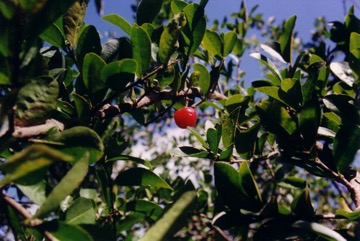
A tropical and subtropical plant. It suits the hot tropical lowlands. It grows on sandy soils and in seasonally drier regions. Rainfall during flowering and fruiting improves fruit quantity and size. They do best in a frost free site. They need a well drained soil. They can tolerate frost and drought. They do best in warm to hot climates with temperatures of 30-32°C. It can grow in arid places. In Brisbane Botanical Gardens. It suits hardiness zones 9-12. In XTBG Yunnan.
Also known as:
Antilles cherry, Buah acerola, Buesito, Ceri India barat, Cereso, Cerezo, Cerezo de Barbados, Choeri, Escobillo, Murta, Palo bonito, Palo de lumbre, Pohon ceri barbados, San juanillo, San ruanillo, Simeyaranelli, So'ri, Tsiriotra, Vallari, West Indian cherry, Xochototl
Synonyms
- Malphigia punicifolia L.
- Malpighia biflora Poir.
- Malpighia dicipiens Sesse & Moc.
- Malpighia glabra ssp. undulata (A. Juss.) F.K. Mey
- Malpighia uniflora Tussac
- and others
Edible Portion
- Fruit
Where does Barbados cherry grow?
Found in: Africa, Amazon, Antilles, Asia, Australia, Bangladesh, Barbados, Belize, Brazil, Caribbean, Central Africa, Central America, China, Colombia, Congo DR, Costa Rica, Cuba, Curacao, Dominican Republic, East Africa, East Timor, Ecuador, El Salvador, Fiji, Ghana, Guatemala, Guyana, Haiti, Hawaii, Honduras, India, Indochina, Indonesia, Jamaica, Madagascar, Malaysia, Mauritius, Mexico, Nicaragua, North America, Pacific, Pakistan, Panama, Peru, Philippines, Pohnpei, Puerto Rico, SE Asia, Senegal, Sierra Leone, Singapore, Solomon Islands, South America, Taiwan, Thailand, Timor-Leste, Tuvalu, United States (Texas), Venezuela, Vietnam, West Africa, West Indies
Notes: The fruit are rich in Vit C (when green), Vit A, iron and calcium. They can contain 50-65 x the Vit C of oranges. There are 200-300 mg per 10 g acerola or 5 times the daily requirement.
Status: It is grown in Puerto Rico and exported to the USA as juice or frozen fruit. It is a cultivated food plant.
Growing Barbados cherry, Acerola
Cultivation: They can be grown from hardwood cuttings or budded onto seedlings. They can also be grown by ground layering. Plants can be grown from seed. Seed germinate poorly. A spacing of 3-4 m is suitable. Cross pollination is needed for good fruit production.
Edible Uses: The fruit are eaten fresh or used in juice. They can be used for wine. They can be used in jellies, jams and preserves. The sauce or puree can be used as a topping for cakes, puddings, ice cream or sliced bananas. Caution: Acerola can produce an allergic reaction similar to that of latex.
Production: Trees bear in 3-4 years. They continue for 15 years. Flowering normally follows periods of rainfall. There can be several flowering and fruiting periods per year. Flowers are pollinated by insects. Fruit can ripen in 3-4 weeks. Fruits loose their flavour and nutritional value rapidly after harvest. They should be picked and eaten within a few hours. Individual trees can yield 15-30 kg of fruit per year.
Nutrition Info
per 100g edible portion| Edible Part | Energy (kcal) | Protein (g) | Iron (mg) | Vitamin A (ug) | Vitamin c (mg) | Zinc (mg) | % Water |
|---|---|---|---|---|---|---|---|
| Fruit | 39 | 1.8 | 0.8 | 800 | 2100 | - | 83.2 |
Barbados cherry, Acerola Photos

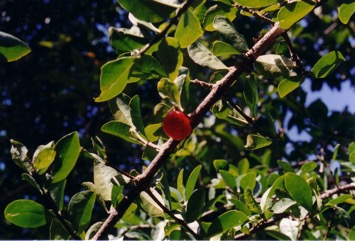
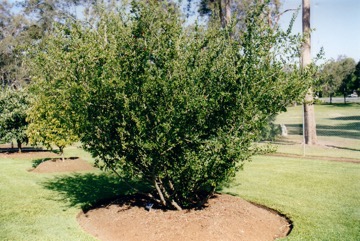
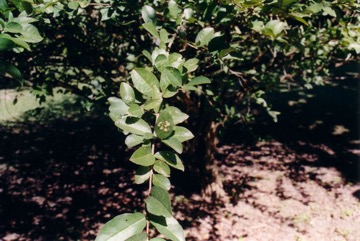
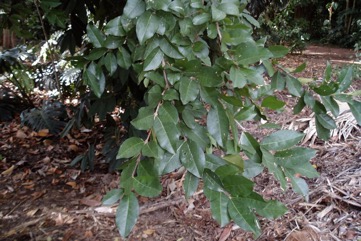
References
Abbiw, D.K., 1990, Useful Plants of Ghana. West African uses of wild and cultivated plants. Intermediate Technology Publications and the Royal Botanic Gardens, Kew. p 46
Ambasta, S.P. (Ed.), 2000, The Useful Plants of India. CSIR India. p 351 (Also as Malpighia punicifolia)
Barwick, M., 2004, Tropical and Subtropical Trees. A Worldwide Encyclopedic Guide. Thames and Hudson p 261
Bodkin, F., 1991, Encyclopedia Botanica. Cornstalk publishing, p 669
Brickell, C. (Ed.), 1999, The Royal Horticultural Society A-Z Encyclopedia of Garden Plants. Convent Garden Books. p 650
Brouk, B., 1975, Plants Consumed by Man. Academic Press, London. p 159
Burkill, I.H., 1966, A Dictionary of the Economic Products of the Malay Peninsula. Ministry of Agriculture and Cooperatives, Kuala Lumpur, Malaysia. Vol 2 (I-Z) p 1421
Casas, A., et al, 1996, Plant Management Among the Nahua and the Mixtec in the Balsas River Basin, Mexico: An Ethnobotanical Approach to the Study of Plant Domestication. Human Ecology, Vol. 24, No. 4 pp. 455-478
Chizmar Fernandez, C., et al, 2009, Plantas comestibles de Centroamerica. Instituto de Biodiversidad, Costa Rica. p 228
Coronel, R.E., 1982, Fruit Collections in the Philippines. IBPGR Newsletter p 7
Cruz, I. M., et al, 2015, Edible fruits and seeds in the State of Mexico. Revista Mexicana de Ciencias Agricolas. Vol. 6. Num. 2 pp 331-346
Cundall, P., (ed.), 2004, Gardening Australia: flora: the gardener's bible. ABC Books. p 857
Darley, J.J., 1993, Know and Enjoy Tropical Fruit. P & S Publishers. p 129
Engel, D.H., & Phummai, S., 2000, A Field Guide to Tropical Plants of Asia. Timber Press. p 138
Etherington, K., & Imwold, D., (Eds), 2001, Botanica's Trees & Shrubs. The illustrated A-Z of over 8500 trees and shrubs. Random House, Australia. p 460
Facciola, S., 1998, Cornucopia 2: a Source Book of Edible Plants. Kampong Publications, p 146 (As Malpighia punicifolia)
Flora of Pakistan. www.eFloras.org
Friday, J. B., 2005, Forestry and Agroforestry Trees of East Timor. http://www.ctahr.hawaii.edu/forestry/data/Timor/Timor trees.html
Garner, R.J., and Chaudhri, S.A., (Ed.) 1976, The Propagation of Tropical fruit Trees. FAO/CAB. p 386
Grandtner, M. M., 2008, World Dictionary of Trees. Wood and Forest Science Department. Laval University, Quebec, Qc Canada. (Internet database http://www.wdt.qc.ca)
Grandtner, M. M. & Chevrette, J., 2013, Dictionary of Trees, Volume 2: South America: Nomenclature, Taxonomy and Ecology. Academic Press p 377
Hedrick, U.P., 1919, (Ed.), Sturtevant's edible plants of the world. p 398
Hedrick, U.P., 1919, (Ed.), Sturtevant's edible plants of the world. p 399 (As Malpighia punicifolia)
Hermandez Bermejo, J.E., and Leon, J. (Eds.), 1994, Neglected Crops. 1492 from a different perspective. FAO Plant Production and Protection Series No 26. FAO, Rome. p16
http://www.ntbg.org/plants/plant details.php (As Malpighia punicifolia)
INFOODSUpdatedFGU-list.xls (As Malpighia punicifolia)
INFOODS:FAO/INFOODS Databases
Jardin, C., 1970, List of Foods Used In Africa, FAO Nutrition Information Document Series No 2.p 146
Jardin, C., 1970, List of Foods Used In Africa, FAO Nutrition Information Document Series No 2.p 146 (As Malpighia punicifolia)
John, L., & Stevenson, V., 1979, The Complete Book of Fruit. Angus & Robertson p 73
Khan, D. & Shaukat, S.S., 2006, The Fruits of Pakistan: Diversity, Distribution, Trends of Production and Use. Int. J. Biol. Biotech., 3(3):463-499
Kiple, K.F. & Ornelas, K.C., (eds), 2000, The Cambridge World History of Food. CUP p 1713
Latham, P & Mbuta, A., 2017, Useful Plants of Central Province, Democratic Republic of Congo. Volume 2. Salvation Army p 12
Little, E. L., et al, 1974, Trees of Puerto Rico and the Virgin Islands. USDA Handbook 449. Forestry Service. p 372 (Also as Malpighia punicifolia)
Lyle, S., 2006, Discovering fruit and nuts. Land Links. p 273 (As Malpighia punicifolia)
Macbride. J. F., 1949, Flora of Peru. Malpighiaceae. Field Museum Natural History. Chicago. p 854
Martin, F. W., et al, 1987, Perennial Edible Fruits of the Tropics. USDA Handbook 642 p 36
Miguel, E., et al, 1989, A checklist of the cultivated plants of Cuba. Kulturpflanze 37. 1989, 211-357
Morton, J. F., 1987, Fruits of Warm Climates. Wipf & Stock Publishers p 204
Norrington, L., & Campbell, C., 2001, Tropical Food Gardens. Bloomings Books. p 94
Omawale, 1973, Guyana's edible plants. Guyana University, Georgetown p 13 (As Malpighia punicifolia)
Paz, F. S., et al, 2021, Edible Fruit Plant Species in the Amazon Forest Rely Mostly on Bees and Beetles as Pollinators. Journal of Economic Entomology, XX(XX), 2021, 1–13
Pasha, M. K. & Uddin, S. B., 2019, Minor Edible Fruits of Bangladesh. Bangladesh J. Plant Taxon. 26(2): 299–313
Paul, A., 2013, Minor and uncultivated fruits of Eastern India, 2nd International Symposium on Minor Fruits and Medicinal Plants (As Malpighia punicifolia)
Plants of Haiti Smithsonian Institute http://botany.si.edu/antilles/West Indies
PROSEA (Plant Resources of South East Asia) handbook, Volume 2, 1991, Edible fruits and nut. p 198
Purseglove, J.W., 1968, Tropical Crops Dicotyledons, Longmans. p 637
Recher, P, 2001, Fruit Spirit Botanical Gardens Plant Index. www.nrg.com.au/~recher/ seedlist.html p 2
Royal Botanic Gardens, Kew (1999). Survey of Economic Plants for Arid and Semi-Arid Lands (SEPASAL) database. Published on the Internet; http://www.rbgkew.org.uk/ceb/sepasal/internet [Accessed 3rd May 2011]
Segura, S., et al, 2018, The edible fruit species in Mexico. Genet Resour Crop Evol (2018) 65:1767–1793
Sharma, B.B., 2005, Growing fruits and vegetables. Publications Division. Ministry of Information and broadcasting. India. p 133 (As Malphigia punicifolia)
Solomon Islands Ministry of Agriculture, 1996, Solomon Islands: Country report to the FAO International Technical Report of Plant Genetic Resources. Leipzig. p 23
Smith, A.C., 1985, Flora Vitiensis Nova: A New flora of Fiji, Hawai Botanical Gardens, USA Vol 3 p 722 (As Malpighia punicifolia)
Sp. pl. 1:425. 1753
Standley, P. C. & Record, S. J., 1936, The Forests and Flora of British Honduras. (Belize). p 215
Sukarya, D. G., (Ed.) 2013, 3,500 Plant Species of the Botanic Gardens of Indonesia. LIPI p 378, 668 (Also as Malpighia punicifolia)
Tankard, G., 1990, Tropical fruit. An Australian Guide to Growing and using exotic fruit. Viking p 14
Thaman, R. R, 2016, The flora of Tuvalu. Atoll Research Bulletin No. 611. Smithsonian Institute p 97
van Wyk, B., 2005, Food Plants of the World. An illustrated guide. Timber press. p 237
Vasquez, R. and Gentry, A. H., 1989, Use and Misuse of Forest-harvested Fruits in the Iquitos Area. Conservation Biology 3(4): 350f
World Checklist of Useful Plant Species 2020. Royal Botanic Gardens, Kew
www.worldagroforestrycentre.org/treedb/